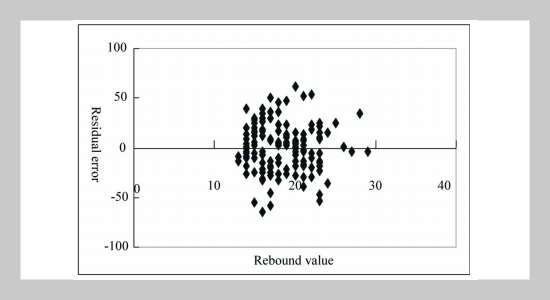Jen-Chei Liu1, Mou-Lin Sue1 and Chang-Huan Kou This email address is being protected from spambots. You need JavaScript enabled to view it.1 1Department of Civil Engineering and Engineering Informatics‚ Chung-Hua University, Hsin Chu, Taiwan 300‚ R.O.C.
Received:
April 24, 2007
Accepted:
June 27, 2008
Publication Date:
March 1, 2009
Download Citation:
||https://doi.org/10.6180/jase.2009.12.1.01
This study estimates the strength of concrete, an attempt is also made to increase the accuracy of Calculating the strength, using the nondestructive test (NDT) surface hardness rebound value, material design parameters and regression analysis. The strength of the concrete specimens was 130-480 kgf/cm2 , and their ages were 7-38 days. In total, 166 standard specimens of concrete were grouped into 146 training examples and 20 test examples to estimate concrete compressive strength. Regression analysis was performed to establish a mathematical formula. Study results indicate that the correlation coefficient may reach 0.9622, indicating that the proposed method has referential value. Therefore, engineers may use this comprehensive approach to develop NDTs to determine concrete strength.ABSTRACT
Keywords:
Strength of Concrete, Rebound Value, Design Parameters, Regression Analysis
REFERENCES
















